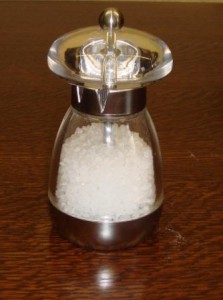There are halotherapy centers cropping up all over the US and EU. I had been asked about the effectiveness of these centers in casual conversation, had no idea what it was, and honestly never gave the topic a passing thought….until I passed one in a strip mall in Florida. The sign outside the center offered that it could fix just about every respiratory and skin ailment one could dream of having: asthma, headaches, allergies, COPD (Chronic Obstructive Pulmonary Disease), Flu, smokers cough, chronic bronchitis, psoriasis, eczema….and the list goes on! But does it work or is it just a trend?
What is halotherapy?
Halotherapy is a type of alternative therapy, in which you go into dry salt mines (or a replicated version of a dry salt mine from the EU) and breathe in the air around you which is a microclimate of a salt aerosol treatment. It is claimed that the created climate with the correct amount of humidity and salt in the air, can not only cleanse your respiratory tract but also your skin and help to basically detoxify you.
People with cystic fibrosis, who get significant build up of mucous in their lungs, do very well, when medically treated, with high salt concentration nebulizers. A nebulizer treatment is basically when you create an aerosol treatment out of oxygen flow and a treatment fluid of your choice, and for cystic fibrosis patients, some very strong studies have shown an improved lung function after these treatments….in hospitals. Also, patients that are smokers, with smokers “coughs” have been found to have relief of their coughs, temporarily and a decrease in mucous production, with high salt aerosol treatments, in a hospital setting. Basically inhaling the high salt treatments, dries out your lungs and mucous production decreases. It is probably a very similar experience to people who live in humid climates go to a desert or somewhere with minimal humidity; breathing feels SO much easier if you have a chronic lung disease (I have asthma and can speak from experience on this end!)
What’s the verdict?
Much like many new alternative treatments, halotherapy has not directly been studied, but because these treatments have been successful with certain subsets of patients, the assumption is that it will work on many more patients, diseases, disorders, etc. People who regularly go for halotherapy treatments seem to report feeling better and they obviously return for treatment. And halotherapy centers like to point out that they are wellness centers aimed at helping people lead healthier lives, which I can totally be on board with, and if you are someone who has quit smoking but can’t get rid of that cough, or has some sort lung disease where you have an overproduction of mucous, it may be worth a shot. That being said, you should see your HCP if you have symptoms (such as a chronic cough or mucous production that are not going away) because it may be something serious, but if you want to alleviate symptoms, at this point, I do not see it doing any harm….it just might not help you a whole lot and cost you a few $. My biggest fear would be sick people coming into this humidified air to cure their bronchitis (or whatever issue they have) and spreading it to others, but you would have to check out the halotherapy center nearest you and see if you are solo in treatment or with others, and how they prevent the spread of viruses and bacteria in their microclimate. Use your best judgement, and be sure to tell your HCP if you are using this alternative therapy….then maybe we can get some real research on it!
Yours in Good Health
B


